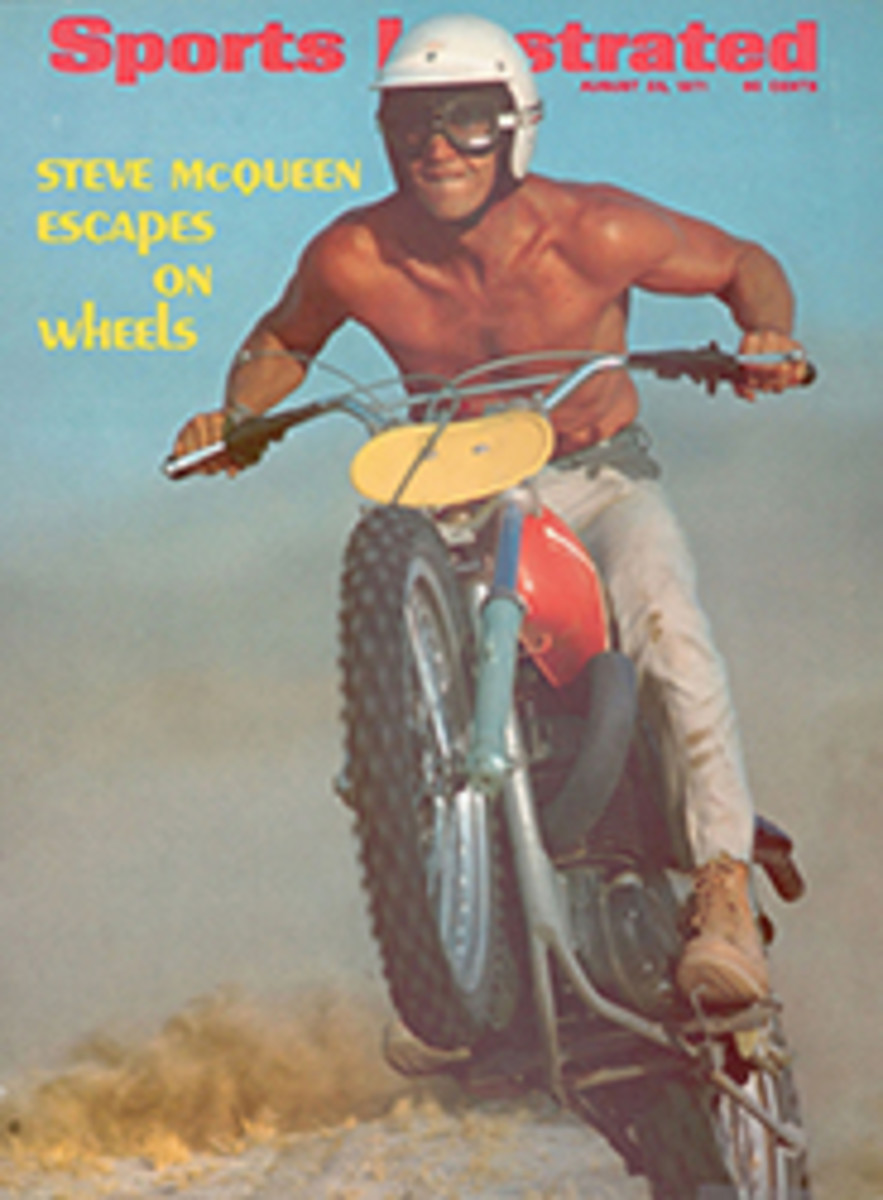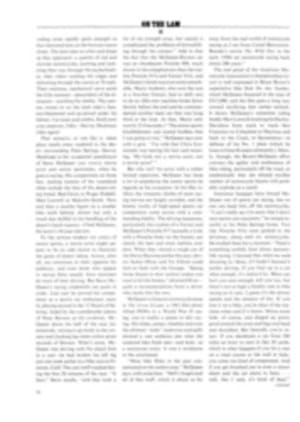
School's in: watch out for baseball players
One year ago, on a flat 121-acre plot of sandy soil just southeast of Sarasota, Fla. the doors were opened to something called the Kansas City Royals Baseball Academy. Built at a cost of $1½ million by Ewing Kauffman, owner of the big-league Royals, the academy was supposed to take young athletes not versed in baseball but otherwise extremely gifted and send them on their way to the majors. Not since Bill Veeck signed a midget had baseball produced such a laugh.
Well, who's laughing now? At the end of last week the best record in all of professional baseball—a staggering .813 winning percentage—had been hammered out by the first graduating class of Kauffman's academy, whose young, overlooked misfits were making a farce out of the Gulf Coast rookie league, a federation otherwise composed of the top draft choices of the Minnesota Twins, Pittsburgh Pirates, St. Louis Cardinals, Cincinnati Reds, Chicago White Sox and Cleveland Indians.
The Academy Royals had won 30 of 37 games, and in one outing stole nine bases. The pitching staff had more shutouts than the league's other six teams combined, and the triple, supposedly the most exciting offensive play in baseball, was being exhibited as never before. Unaided by anything as fast as an artificial surface, the Royals had banged out 24 three-base hits.
The idea of the academy was, and is, so futuristic that many baseball executives don't believe it even now. In 1970 a total of 7,682 youngsters between the ages of 16 and 21 were scouted by the academy's staff, and 42 were selected for the first class. None had been considered seriously by any other major league team during the drafting periods and eight had never played even one inning of high school baseball. Today 19 members of the original group remain at the academy. Four others already have been advanced into Kansas City's minor-league system. When the decision was made to enter the academy team into the Gulf Coast rookie league as a unit, many baseball men—including scouts—said it would fall fiat on its face.
Late last week the second class began arriving in Sarasota, and whereas the first had nothing but hopes of success, the new group had some first-place facts to follow. The outsiders had excuses.
"They are winning because they have played together for a year," some said.
Nonsense, retorted Syd Thrift, the academy's director. "People say that we can execute better than teams that have been together for only six weeks. Heck, you can execute all day and never win if you have players who have weak arms or are slow runners. Our players have good arms and speed."
Supposedly the Royals' biggest stumbling block was going to be pitching. Any scout worth his weight in expense vouchers will testify that it is impossible for a youngster with a live arm to slide past the draft unnoticed. Well, somebody must be wrong somewhere. The Royals are loaded down with unheralded live arms. Of the 12 pitchers used most on the Royals' staff, 11 have won games. Tom Dugan has won three times without losing—and he drives the academy bus.
The other evening Clark Griffith of the Minnesota Twins sat at Payne Park in Sarasota and watched the young Royals. "Any time a team has a record as good as this one's," said Griffith, "you take a look at it. It's possible this team already should be playing in a higher league. Mr. Kauffman's idea is ultraprogressive. People are now watching his players closer than ever before." Eight of Minnesota's top 10 choices from the summer free-agent draft are playing in the league, but with the season almost over, the Twins are 14 games behind the Royals.
Billy Herman, the former Brooklyn Dodger star second baseman, has watched the academy team from the start. "Last fall," he says, "they played junior college teams and I thought they looked real bad. But it's amazing how the players developed."
By spring the Royals were advanced enough to play major colleges, semi-pro teams and even minor-league clubs. At one point the Royals ran off a 24-game winning streak as their percentage climbed to .700. They also took a trip through Nicaragua, Costa Rica, Panama and Colombia, winning 10 of 14 games while drawing 106,000 people.
The team's top players now are Minnie Minoso-Arrietta, son of the old White Sox star, and Ron Washington, a catcher. Young Minnie, 19, is hitting over .330 and will probably make White Sox fans cry in the future. Not drafted by any major-league team despite a fine high school record in Evanston, Ill., Minoso was found by the Royals and brought to Sarasota. He has remained one of the most dedicated students in the academy. Washington has remarkably swift moves for a catcher and is not afraid to throw when he sees a chance to pick a runner off base. He also is fast enough to steal a lot of bases himself, something catchers do not normally do.
It is Syd Thrift's contention that there is no shortstop in the league who can go deeper into the hole and throw the runner out at first better than Frank White. White is one of the athletes who never played an inning of high school baseball, having concentrated on football and basketball. Another is Gary Rahe of Harper, Texas. An outstanding football player, Rahe turned a deaf ear to the blandishments of college recruiters and decided to attend the academy instead, even though he had played only a few games of baseball in his life.
Word of the academy has now spread to young athletes throughout the country. In June a 17-year-old right-handed pitcher named Bob Gipson showed up in Sarasota, having paid his own expenses from Plainfield, Ind., and with a name like that, why he was never drafted is a mystery. The Royals thought it was even more of a mystery when they saw Gipson throw. So far he has won five games and saved two others. Another Hoosier walk-on is Stu Hosking of East Gary, a three-game winner who gives up less than a run a game.
The academy succeeds probably because it does things differently from other organizations, and more thoroughly. There are videotape replays, bodybuilding sessions and classroom lectures, and any time a boy feels he is doing something wrong he can get an instructor to take him out on one of the four diamonds and work to correct his mistake. Every day each student gets a minimum of 20 minutes of hitting against live pitching. There are many major-leaguers who do not get that much hitting time in a week. "Our aim," says Joe Tanner, the hitting instructor, "is to take a boy who is having problems and work with him in such a way that when he is through he walks off the field with a smile on his face because he knows he has accomplished something."
There is no team in baseball today with the overall speed of the young Royals. Manager Buzzy Keller does not hesitate to use the double steal, which has set up a number of big innings. To increase defensive speed, the instructors came up with a novel idea. For years everyone thought a pitching machine should be used only for batting practice; the Royals turned it around and aimed it at their infielders. It throws a ball at exactly the same spot every time, and the fielders move closer or farther away, perfecting their technique with various bounces. And because the bounces are uniform, the players' reactions can be measured and compared. For trickier bounces the staff uses a curveball pitching machine.
The rookie-league season ends this month, which will not be too soon for the academy's opposition. After all, they are the chosen ones of baseball, and it gets tiresome being beaten by football players. In fact, it's no laughing matter unless you are Ewing Kauffman. Then it's hilarious.
TWO PHOTOS
UNBEATEN PITCHER TOM DUGAN DRIVES ACADEMY BUS WHEN HE AND OUTFIELDER MINNIE MINOSO AREN'T DRIVING OPPOSITION WILD

